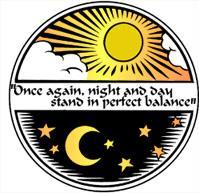Easter origins are Pagan Ēostre, annexed by the Roman Catholic Church
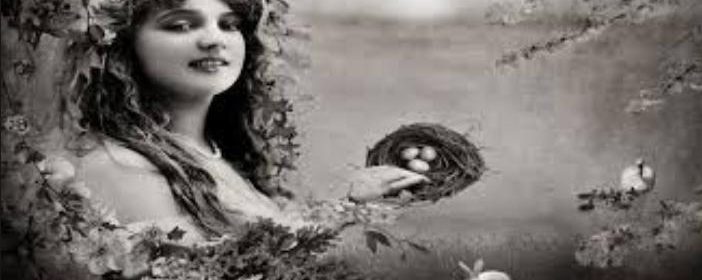
Easter originates from ancient Pagan seasonal festival of Ēostre.
The Christian religion was imposed upon Celtic Pagan Britain by invading imperialist Romans (43-410 AD). The Romans pragmatically adopted Pagan practices of ancient Celtic Europe such as Ēostre (named after the Celtic Goddess of Spring, ‘Ostara‘), in order to artificially legitimise the Roman Catholic Church’s imperialist cultural conversion of invaded subjugates.
As late as the 4th century AD, the ‘sol invictus’ (invincible sun god) was the last great Pagan faith that the Catholic Church had to overcome as the Romans conquered the Galatican Celts of Anatolian peninsula (contemporary Turkey). The Galaticans worshipped the invincible sun ‘sol invictus’ and this faith extended into Rome and on today’s Vatican Hill.
The Celtic legend tells that the sun goddess Cybele had a lover Attis, who was born of a virgin, then died and was reborn again.
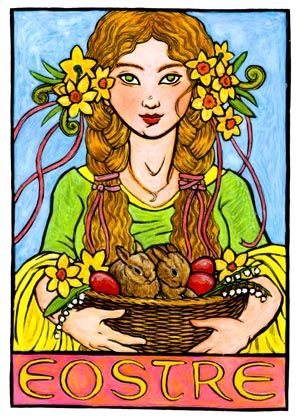
This spring festival began as a day of blood on Black Friday, rising to a crescendo after three days, in rejoicing over the resurrection. This is the original legend behind Christian Easter as adopted by the Catholic Church to the formative time scribing the New Testament by the first Bishop of Rome, St Peter (30-68 AD).
What Pagan traditions and rituals the Church have since adopted and corrupted are all Christian constructs.
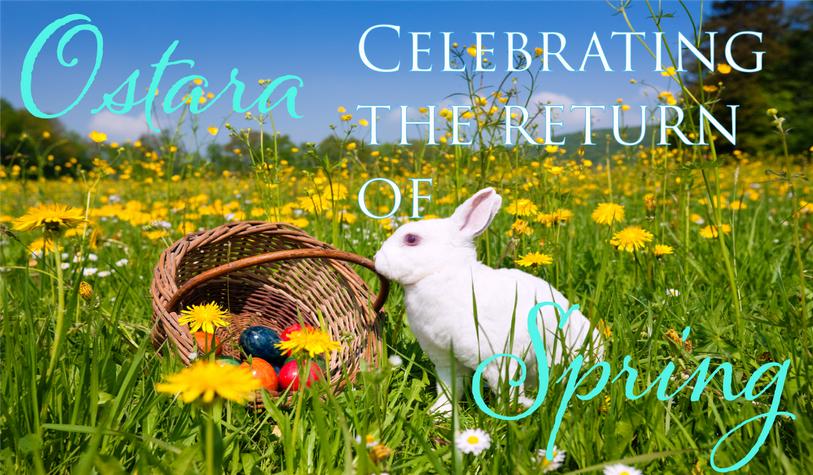
Yet many churches are offering “sunrise services” at Easter – an obvious Pagan solar celebration. The date of Easter is not fixed, but instead is governed by the phases of the moon – how Pagan is that?
All the fun things about Easter are Pagan. Bunnies are a leftover from the Pagan Festival of Ēostre, (Ostara) the warm passionate Pagan Goddess of Spring, fertility and rebirth.
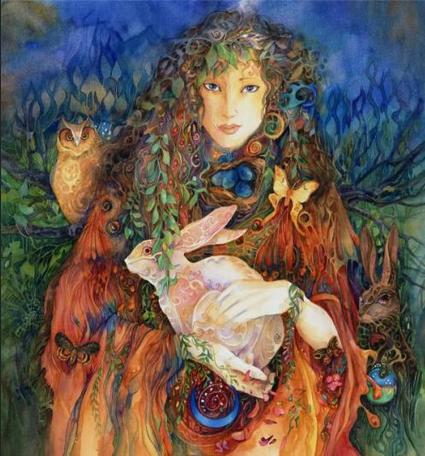 Ēostre is the word origin of oestrogen
Ēostre is the word origin of oestrogen
Symbolism: The hare and painted eggs are both potent symbols of fertility, reflecting the nature of this spring Goddess.
Ostara is the Maiden Goddess, full of potential, representing the opportunity of growth and rebirth after the stagnation of winter.
There are several different translations of the meaning of her name East, dawn and morning light indicating the returning warmth of the sun’s rays and the lengthening days.
Her warm nature is still marked by bonfires lit at dawn on the Spring Equinox. Traditionally people would dress up in new cloths, light bonfires at dawn and decorate eggs as offerings to the spring Goddess.
These ancient symbols are still found in our Easter celebrations today when the Easter bunny hides chocolate eggs for the children to find.
Hot cross buns are very ancient too. The early church clergy also tried to put a stop to sacred cakes being baked at Easter. In the end, in the face of defiant cake-baking Pagan women, they gave up and blessed the cake instead.
Mothering Sunday Simnel Cake was traditionally given by servant girls to their mothers when they returned home on Mothering Sunday at Ēostre. It is a traditional Pagan rich fruit cake which includes lumps of marzipan stirred into the mixture that melts and combines with all the other flavours during cooking. It is then finished off with more marzipan. As it’s now popular at Ēostre, sugared primroses make a good decoration.

In the old world northern hemisphere, when spring approaches, even folks who enjoy winter time usually greet the first buds of flowers and first signs of warmth with a smile. People feel enlivened when the Earth begins its cycle of regeneration.
The turn to spring is celebrated by those who practice the Pagan and Wiccan traditions on the holiday, or sabbat, known as Ostara. Ostara falls on the Spring Equinox. The previous holiday, Imbolc, had occurred six weeks prior and celebrated the promise of life stirring within the still-cold earth. Now, Ostara is the time to begin celebrating that promise being fulfilled as we continue to experience more light and warmth.
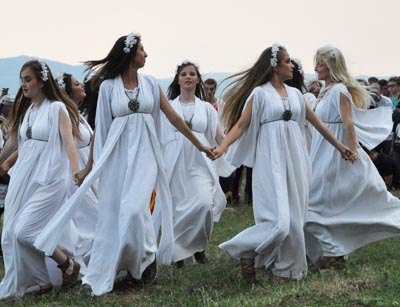
The Spring (or ‘Vernal’) Equinox occurs between March 19 and 22nd in the Northern Hemisphere, and September 20-23 in the Southern Hemisphere. The sun is at 0 degrees Aries and is one of the two times in the year when there is an equal amount of dark and light. The other time of equal dark and light of course is the Autumn Equinox, occurring six months later, on the opposite spoke of the Wheel of the Year.
In Pagan religion the Vernal Equinox is known as ‘Lady Day’ or Alban Eiler in Druidic. The word Ostara, also known as Ēostre, refers to a fertility Goddess.
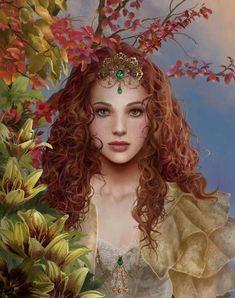
As Spring reaches its midpoint, night and day stand in perfect balance, with light on the increase. The young Sun God celebrates a hierogamy (sacred marriage) with the young Maiden Goddess, who conceives. In nine months, she will again become the Great Mother. It is a time of great fertility, new growth, and newborn animals. The next full moon (a time of increased births) is called the Ostara and is sacred to Eostre the Saxon Lunar Goddess of fertility (from whence we get the word estrogen, whose two symbols were the egg and the rabbit.
The Christian religion adopted these emblems for Easter which is celebrated on the first Sunday after the first full moon following the vernal equinox. The theme of the conception of the Goddess was adapted as the Feast of the Annunciation, occurring on the alternative fixed calendar date of March 25 Old Lady Day, the earlier date of the equinox.
She does appear in the writings of the medieval scholar Bede, so we know there’s some history to her legend. No matter, the thoughts and energies she provokes are engrained in the spring lore. With her attendant symbols of eggs, chicks, lambs and rabbits, we find clear examples of how the Pagan traditions continue through the secular symbology of the modern Western world.
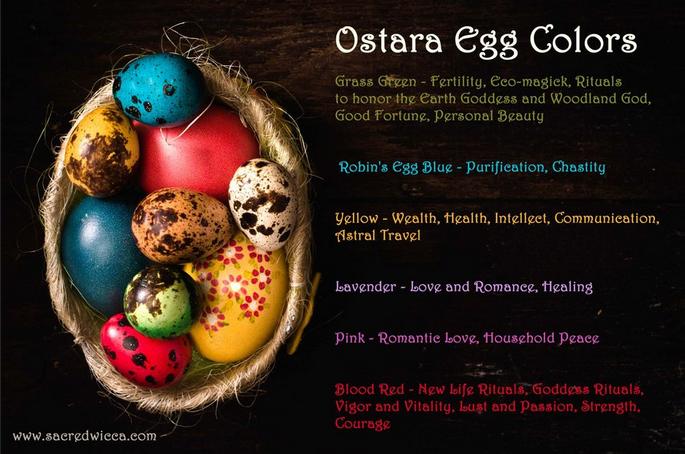
In terms of the male energies, the young God is represented now; curious, passionate, untamed, and unimpressed with status or title. Thus, the trickster archetype runs through these times, represented in various traditions as Coyote, Raven, Brer Rabbit, The Fool of the Tarot, and the young son of the faery King.

Following this, it’s no coincidence that April Fool’s day is right after Ostara.
Any warm days can be taken advantage of to spend longer amounts of time in Nature and perform prayers and rituals outdoors. If you have a green thumb, it’s time to start preparing the soil for your spring herb garden.
Indoors on your altar, you can keep living plants, branches, seeds, colored eggs, representations of rabbits and hares, and of course anything else that seems appropriate to you. This is a good time to cleanse your living area by burning sage. Rituals can use milk and honey as symbols of the season.

As Pagans greet this time in the Wheel of the Year when light surpasses darkness, the following are commonly used:
Traditional Foods: Leafy green vegetables, Dairy foods, Nuts such as Pumpkin, Sunflower and Pine. Flower Dishes and Sprouts.
Herbs and Flowers: Any flowers of European spring – Peony, Iris, Woodruff, Violet, Gorse, Daffodil, Jonquils, Olive, Peony, Iris, Narcissus.
Incense: Any floral. Rose, Strawberry, Jasmine.
Colors: Pale purple, pale green, yellows, pink.
Sacred Gemstone: Jasper.
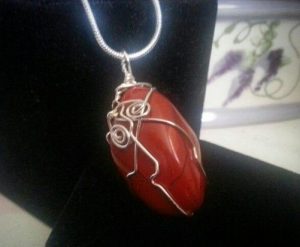
Special Activities: Planting seeds or starting a Magickal Herb Garden. Taking a long walk in Nature with no intent other than reflecting on the Magick of nature and our Great Mother and her bounty.
Spirit: The Ostara sabbat is a time of rejuvenation. As the Earth rises from the slumber of winter, so do our spirits. This is when Pagans spring clean and begin to put our refreshed goals into action. They honour the regenerative powers of Mother Earth. Celebrate it as one wishes with gatherings of loved ones and devotional spells, but also know that simply walking outside and appreciating the awakening Earth is celebration enough as to greet Ostara.
